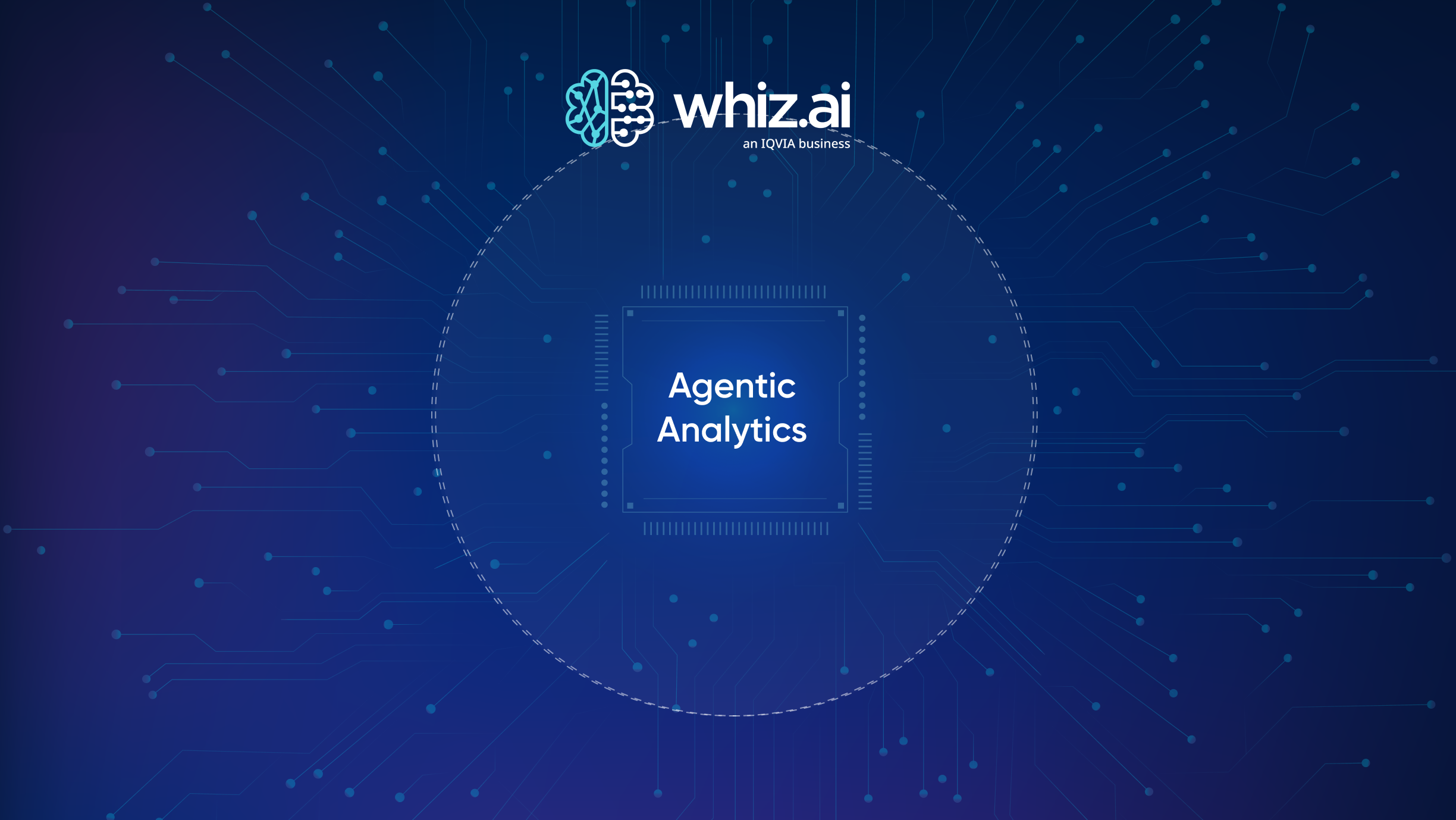How to Practically Deliver Life Science Analytics to Everyone on Your Team
.avif)

Life sciences companies commonly rely on decision analytics for accurate forecasting and their best next steps. The question, however, is how to get life science analytics insights to the right people at the right time. WhizAI’s webinar, “Life Sciences AI: Augmenting Analytics Consumers with a Vertical Approach,” provides the answers.
Augmented consumer analytics helps you look in the direction of the end business user.
Dashboards have been the go-to solution for life science analytics for over a decade. When executives, sales reps, or market access teams need answers, they rely on their data engineers or data scientists to build dashboards and run reports on the information they need. The process can take weeks, creating a costly delay from data acquisition to insights and missed opportunities.
In addition, data teams usually build dashboards for a broad range of users within a life sciences company, so they lack context for users in specific regions or markets.
When powered by artificial intelligence (AI), analytics processes are much different, enabling conversational analytics. Vertical and domain-specific AI-powered analytics are much different as they understand life sciences – language, data, analytics, processes, and users. It eliminates the need to build a dashboard or run lengthy reports. The analytics consumer only has to ask a question and the solution automatically provides the answer based on the analysis of billions of data points.
For the best user experiences and insights, the AI model must be trained for life sciences to understand the data sets that companies analyze and the terminology their employees use.
Examples of conversational analytics questions, answers, and outcomes
Life science companies are understandably intrigued by turning all employees in their organizations into data-driven decision-makers. However, they’re not always clear on exactly how it will work. Ilacqua, along with Rahul Karkhanis, Commercial Specialist for WhizAI, provided two real-life scenarios:
Reversing declining TRx and NBRx trends
In this first example, a brand team needs to understand why the number of total prescriptions (TRx) and new-to-brand prescriptions (NBRx) recently decreased in the disease-modifying antirheumatic drugs (DMARD) market. With life science analytics powered by AI, the team asks to see the 13x13 for their brand. The AI-powered life science analytics platform responds with a table that includes the current number of prescriptions, previous number, absolute change, and percent change in the overall market.
Then, the team asks to see how they’re performing versus their competitors. The augmented consumer platform for life sciences generates a graph comparing their drug to competitive brands. The solution also allows the team to drill down to look at performance by specialty group.
The brand team also accesses physician adoption, prescribing, and switching behaviors by just asking questions in addition to data on the effectiveness of marketing campaigns and sales activity.
In minutes, the team has a clear picture of how its brand is performing versus its competitors in specific regions and among physicians in certain specialties. Furthermore, the team can guide field sales to viable opportunities, helping reverse the trend.
Understand TRx trends and performance by a payer
Ilacqua and Karkhanis’ second example is a market access team that requires insights to develop effective payer, access, and reimbursement strategies. The team asks the AI-driven life science analytics solution to show quarter-over-quarter TRx changes by payment type. The solution immediately generates a chart displaying increases or decreases for prescriptions paid by commercial insurance, assistance, Medicare, Medicaid, managed medical, and cash.
The team also requests rejection rates for their brands versus competitors, and the top reasons for rejections include requests to refill too soon, plan limits reached, and uncovered drugs. The solution also responds to the team’s request for patient-level claims and copays.
In addition, using primary and secondary data sources, the AI-powered platform provides insights within seconds, not weeks, that help the team develop effective strategies that enhance access and increase revenues.
The advantages of life science analytics designed for the augmented consumer
It’s clear that an augmented consumer platform for life sciences decreases the time from inquiry to insight – and to informed decision-making for anyone within the organization who needs information. However, it also creates a culture of data-driven decision-making. Analytics consumers see how easily they can access insights and enhance their performance based on data – and adoption skyrockets. WhizAI clients typically see the adoption of 90 percent or more.
When asked if ‘dashboards are dead?’, Ilacqua commented that he doesn’t see dashboards going away. However, companies determined to compete for market share strategically will empower their teams with insights from life science analytics they can access whenever they need to make pivotal decisions.
For more information on how life science teams leverage WhizAI’s augmented consumer platform for life sciences, watch WhizAI’s webinar, “Life Sciences AI: Augmenting Analytics Consumers with a Vertical Approach,” on-demand.


Subscribe to our blog








.png)






.avif)



.png)